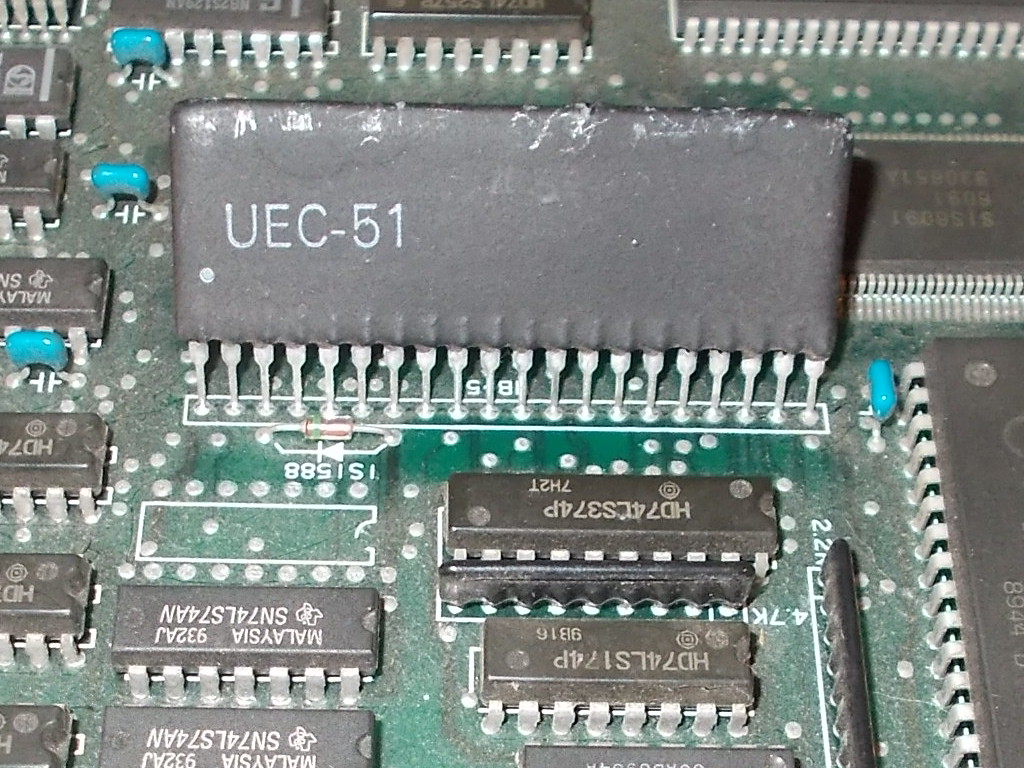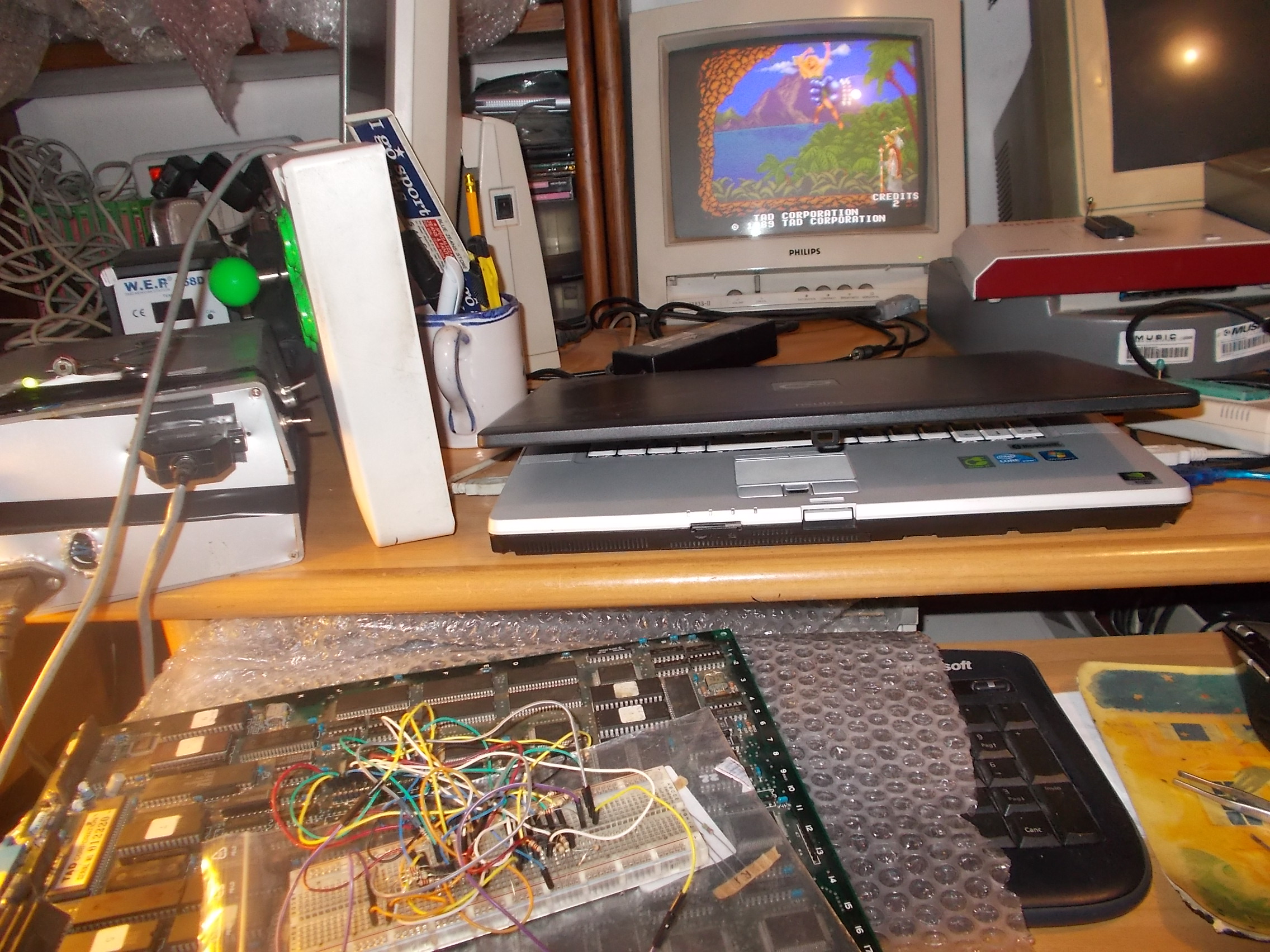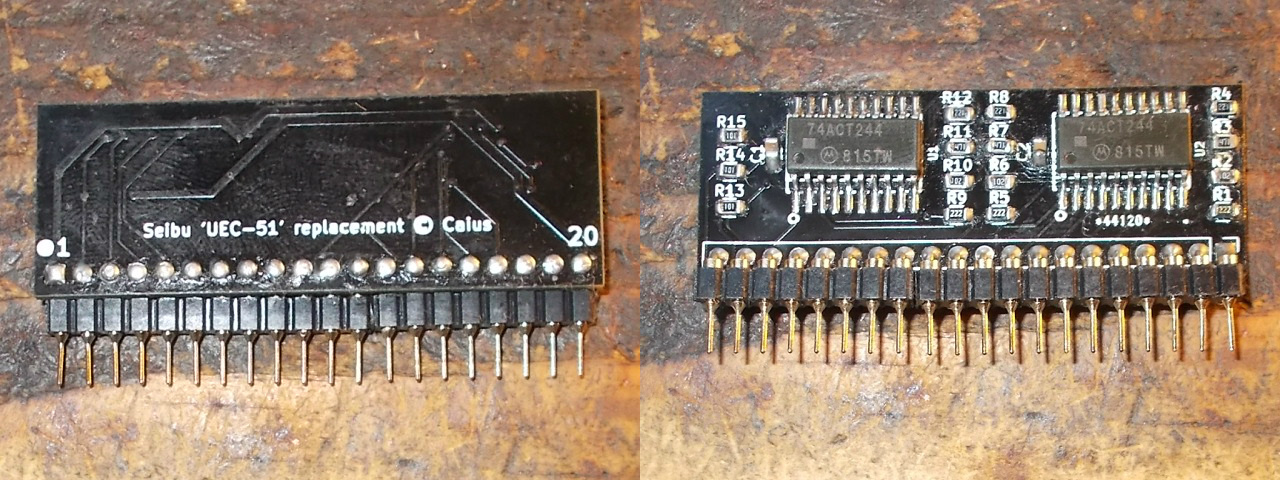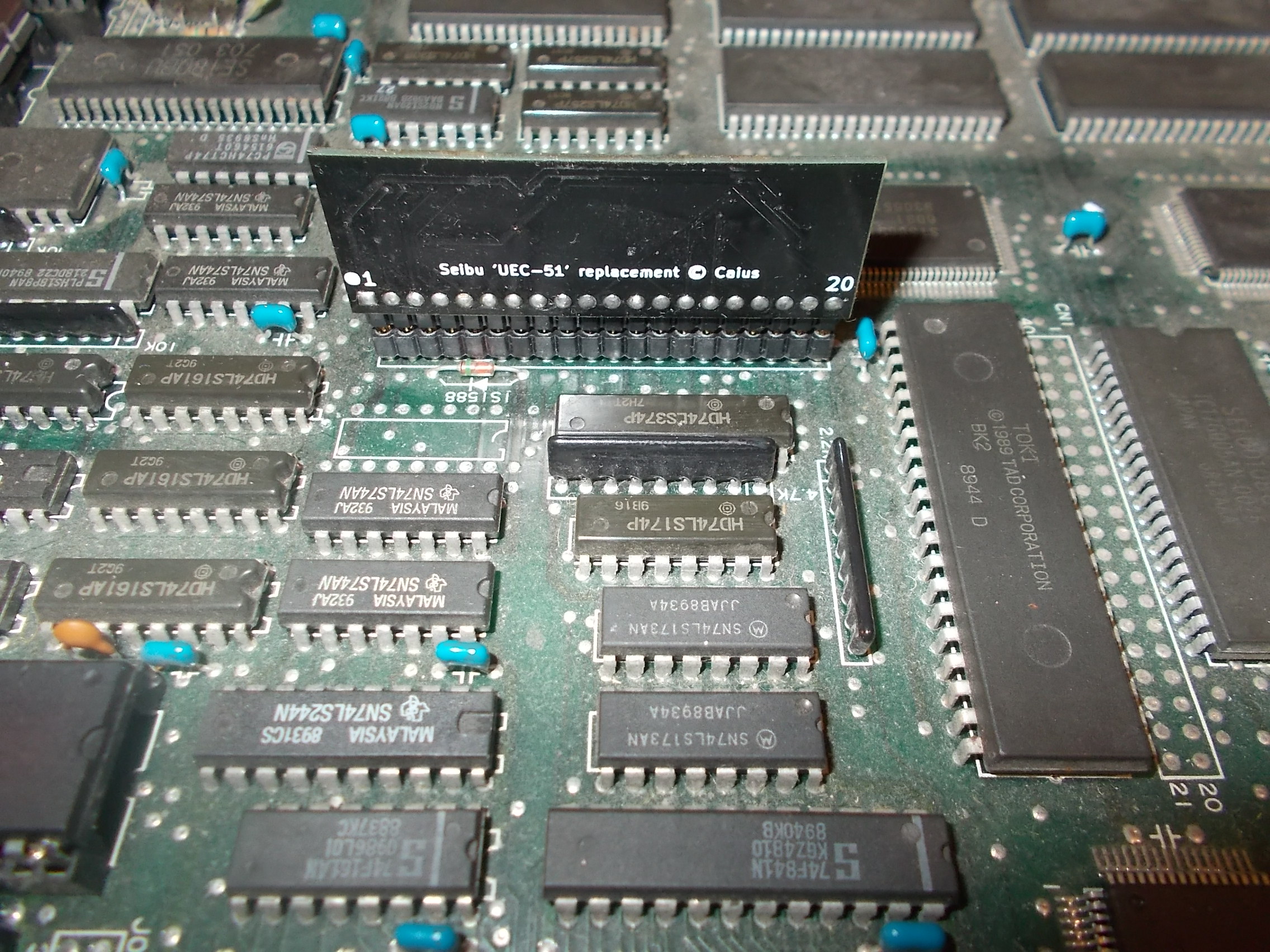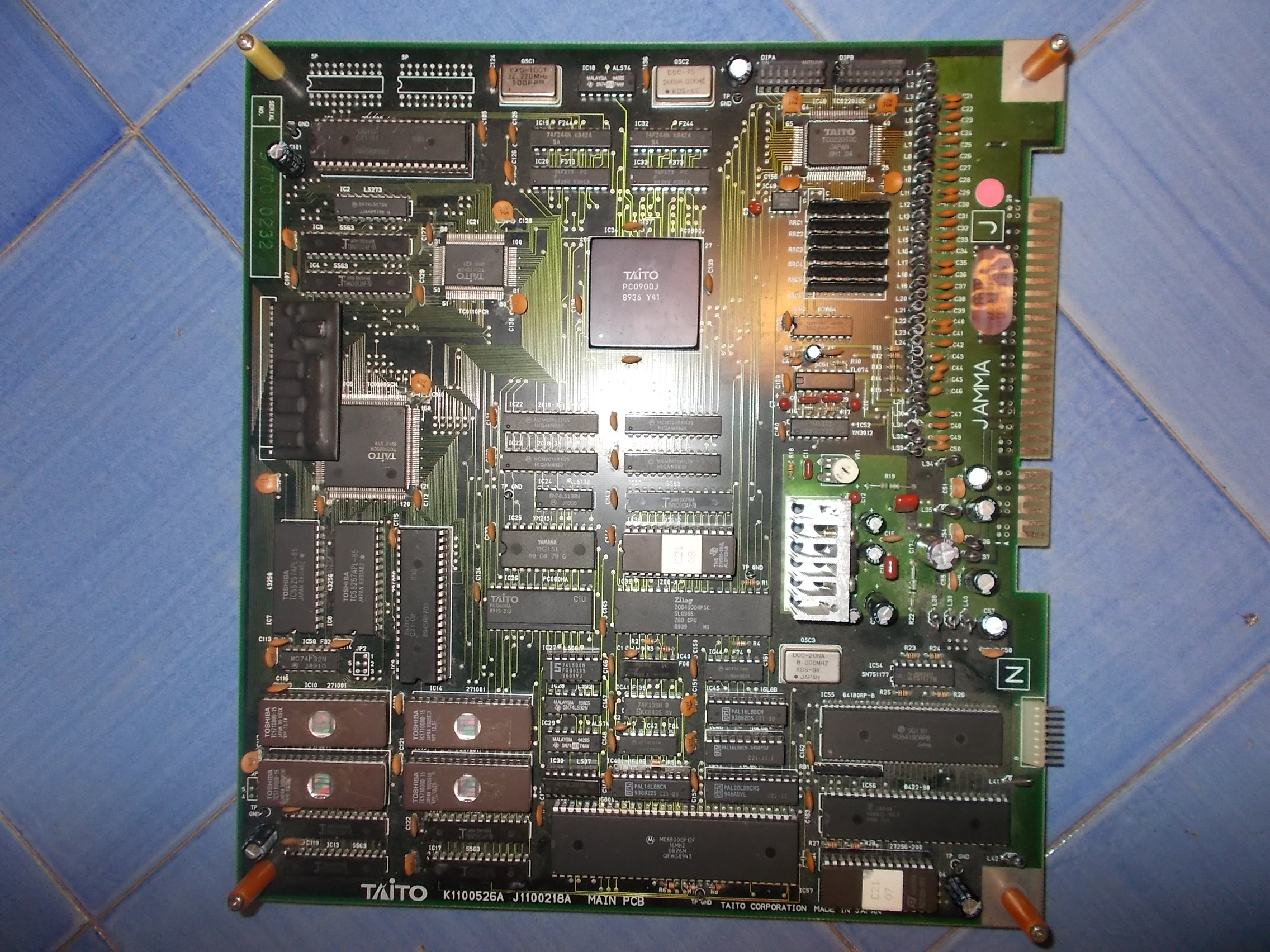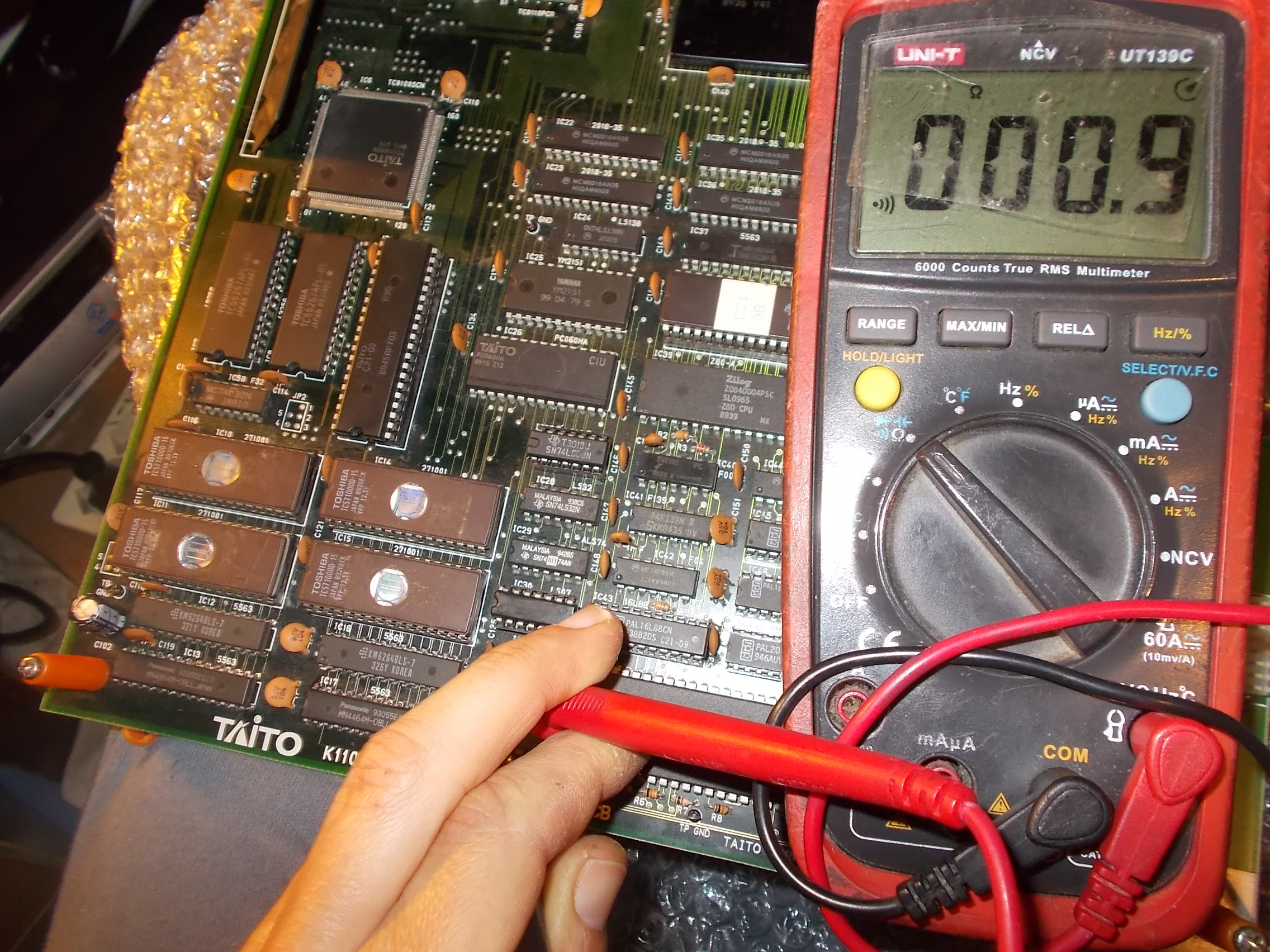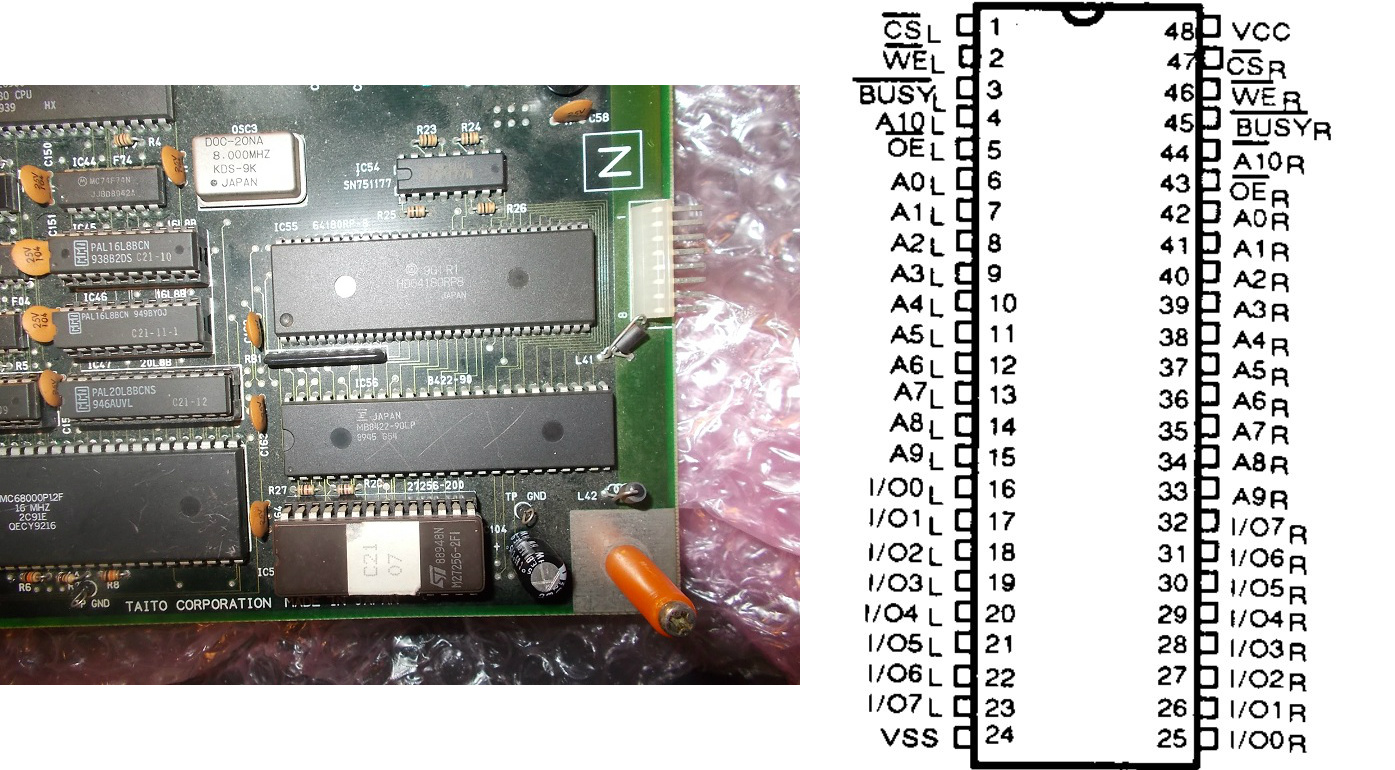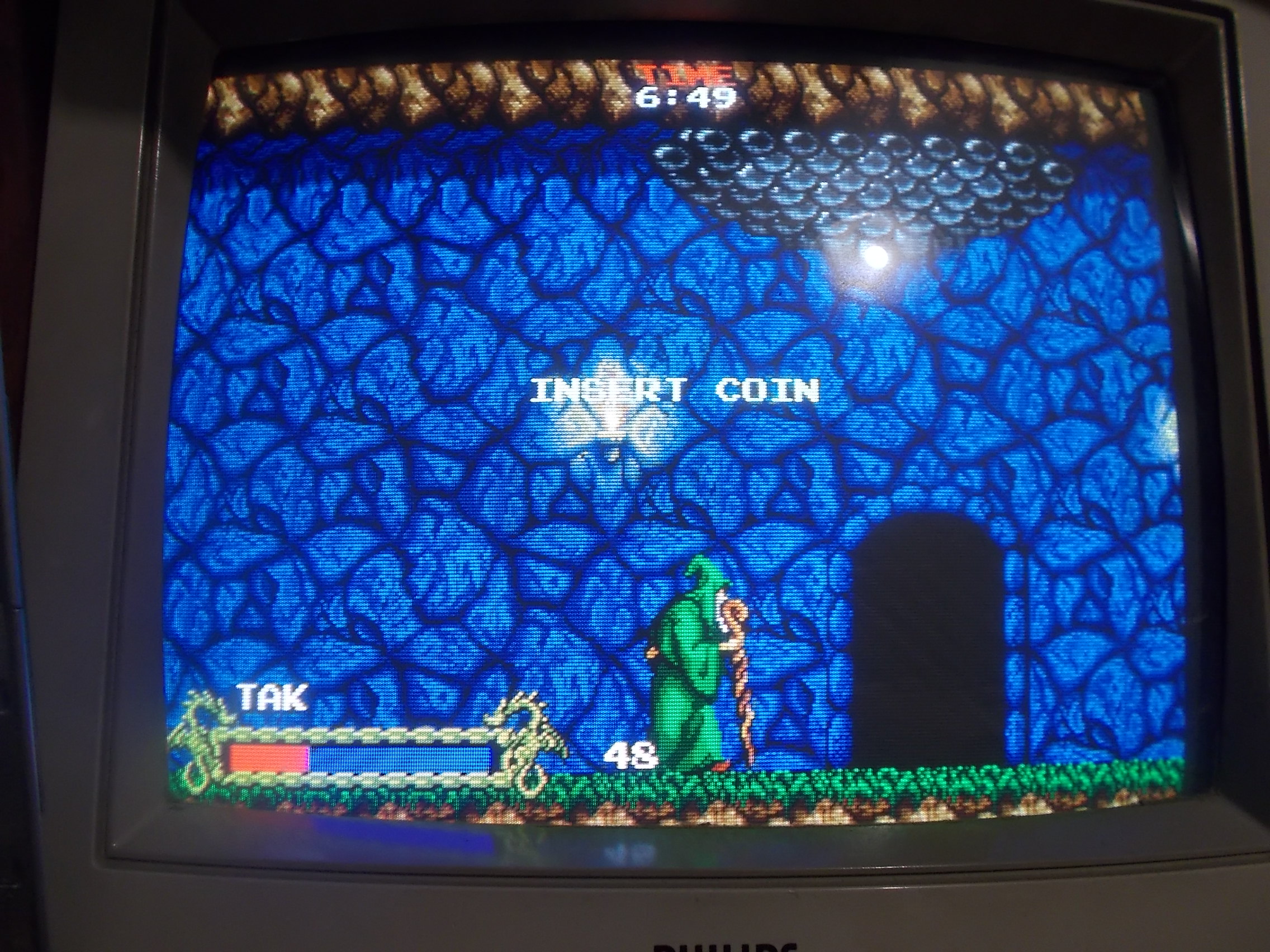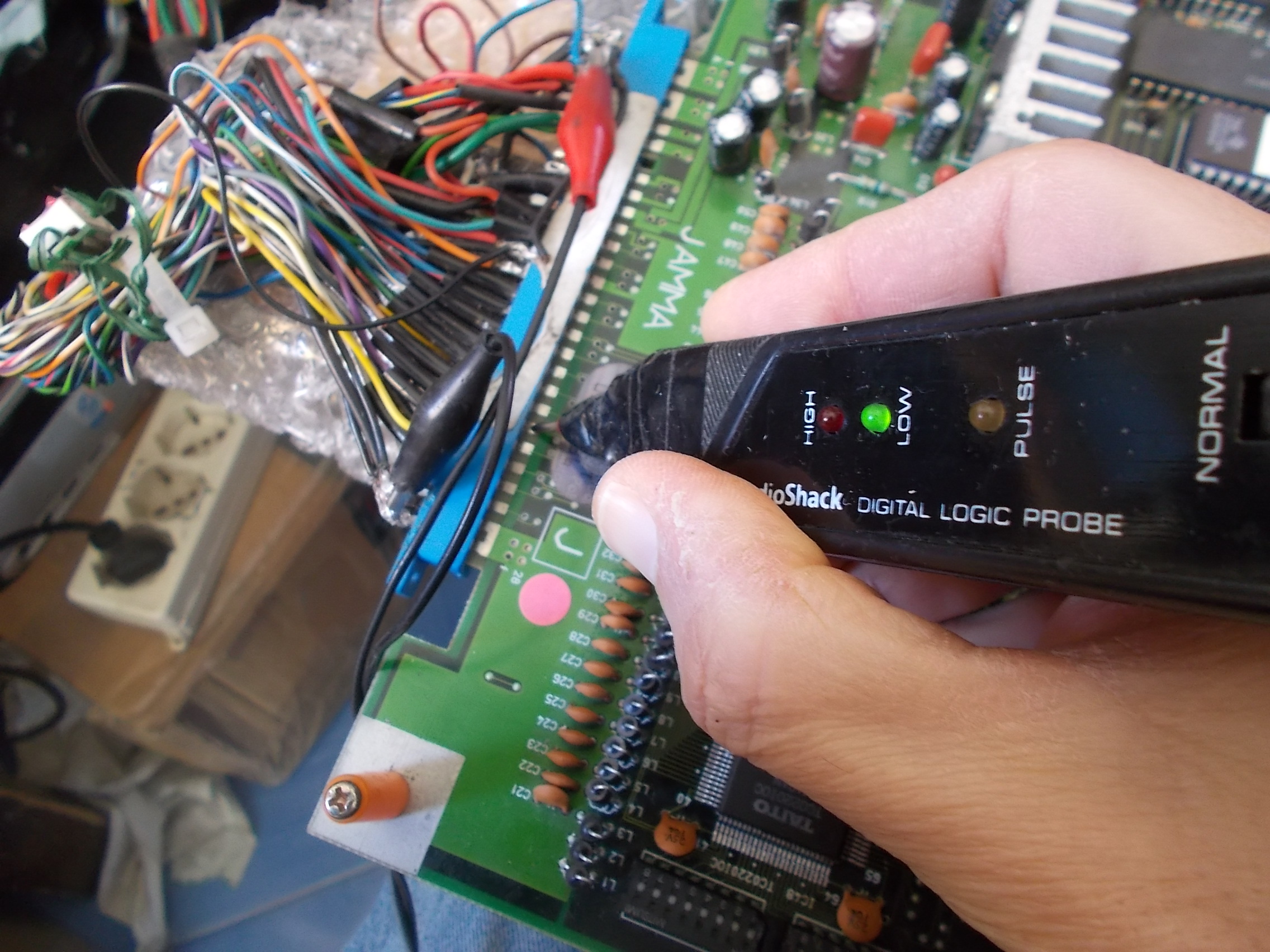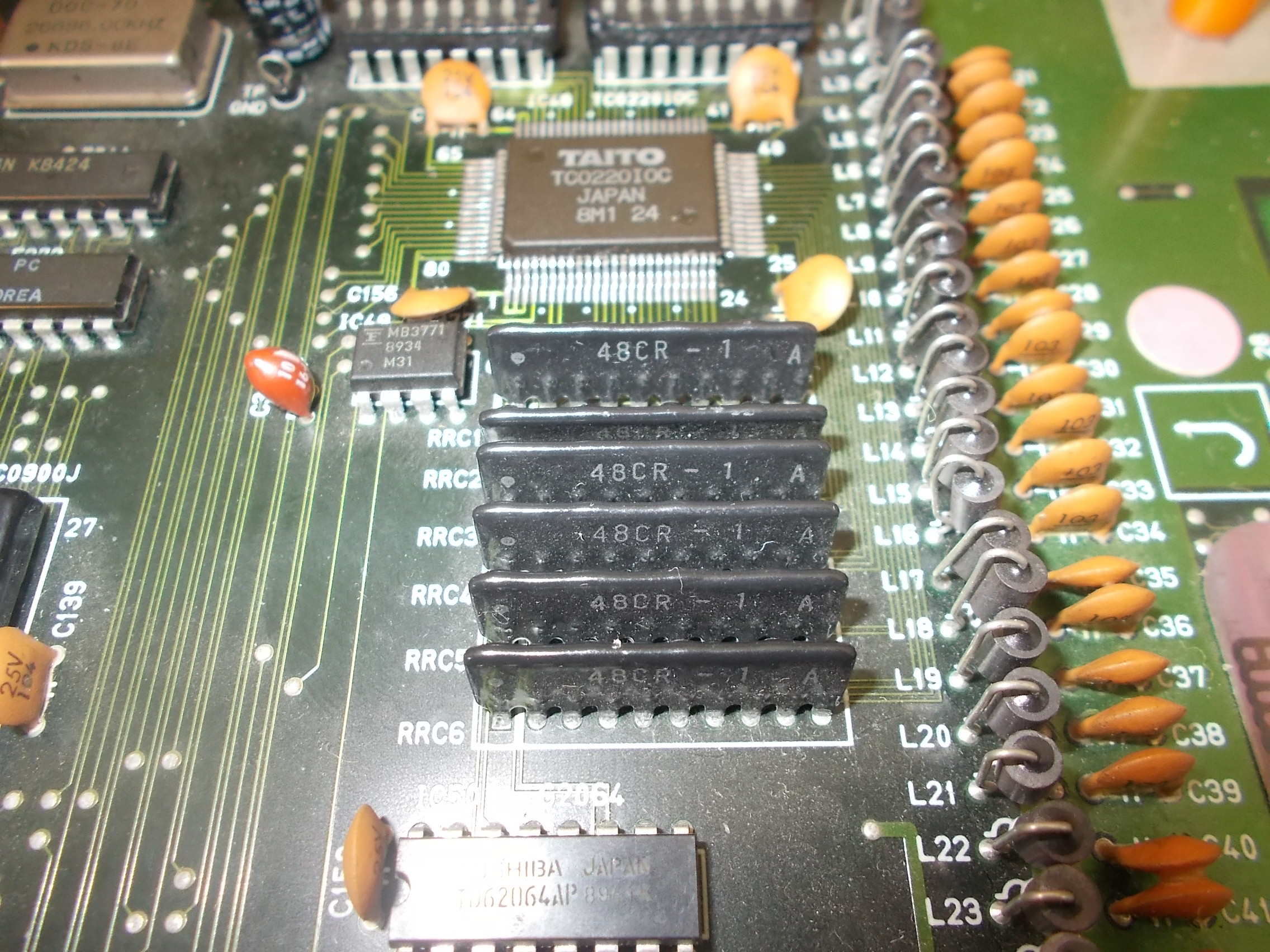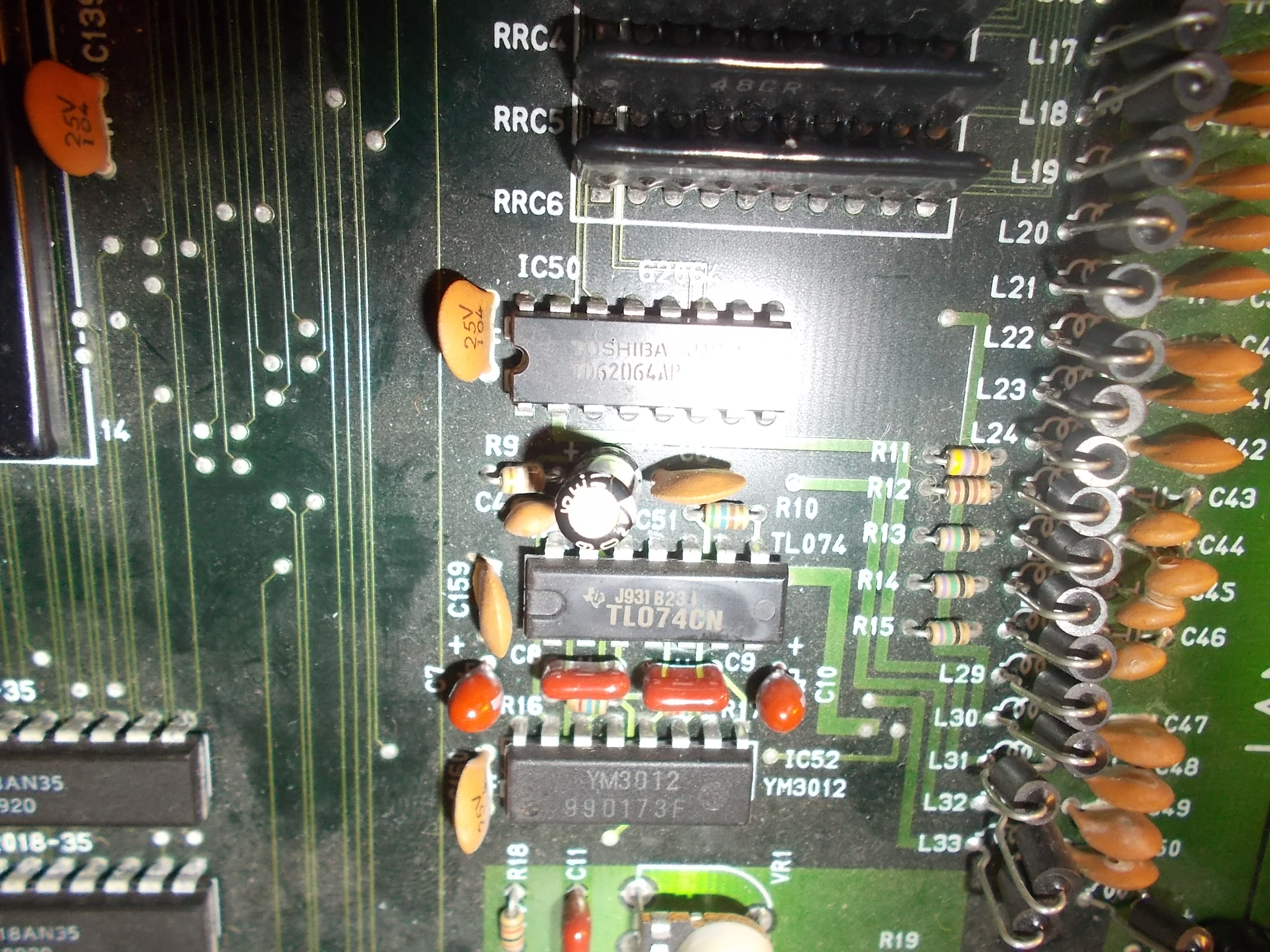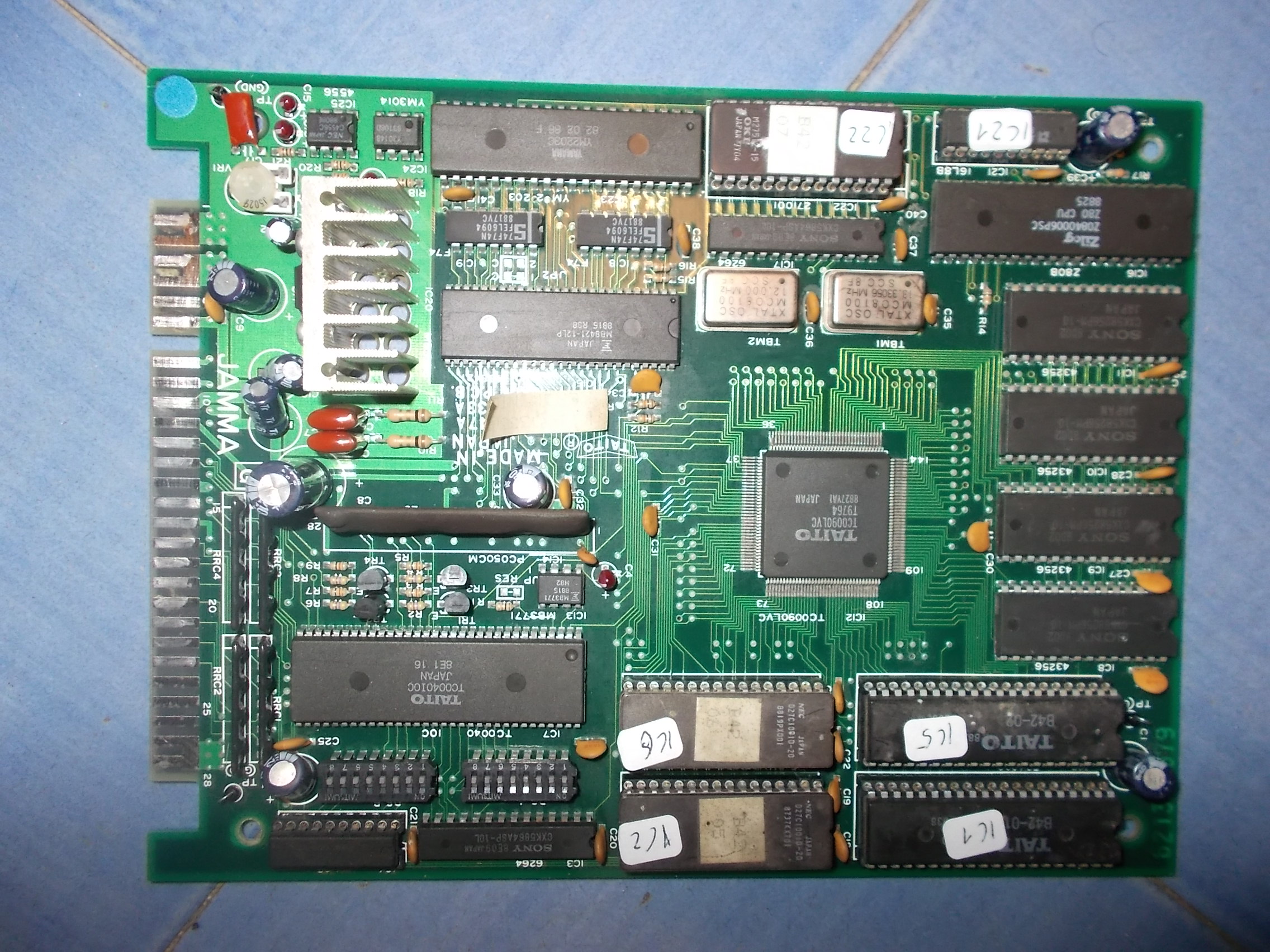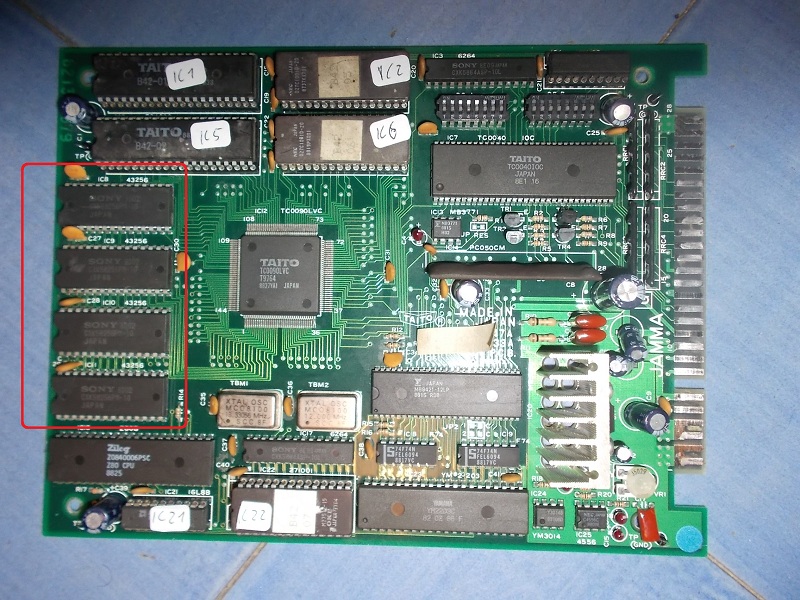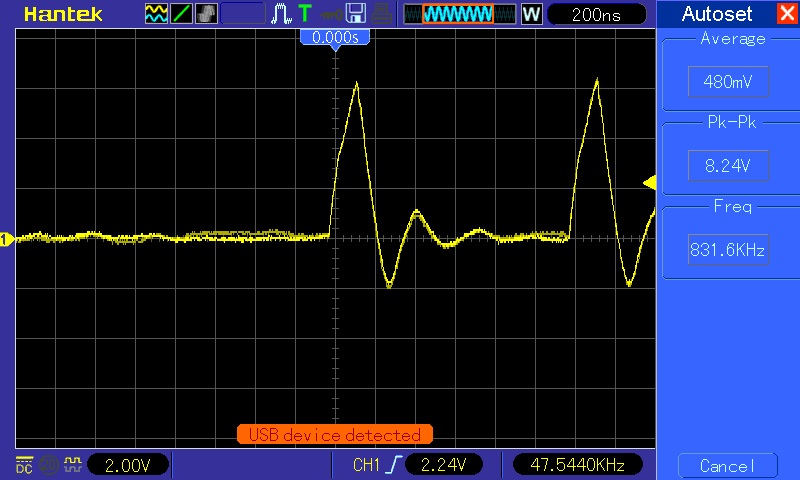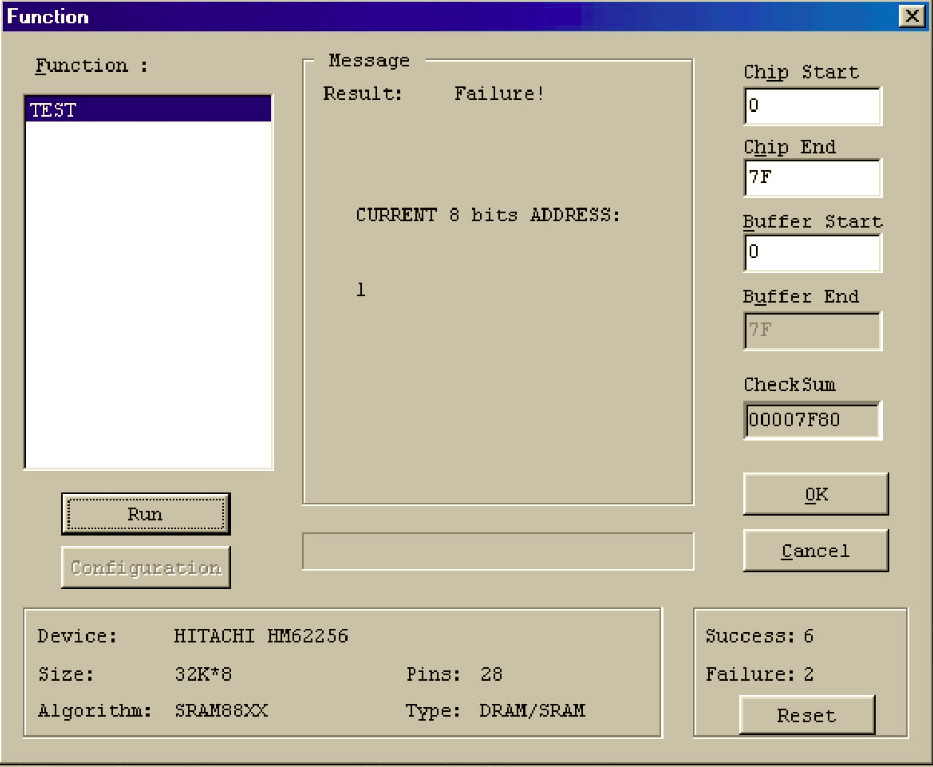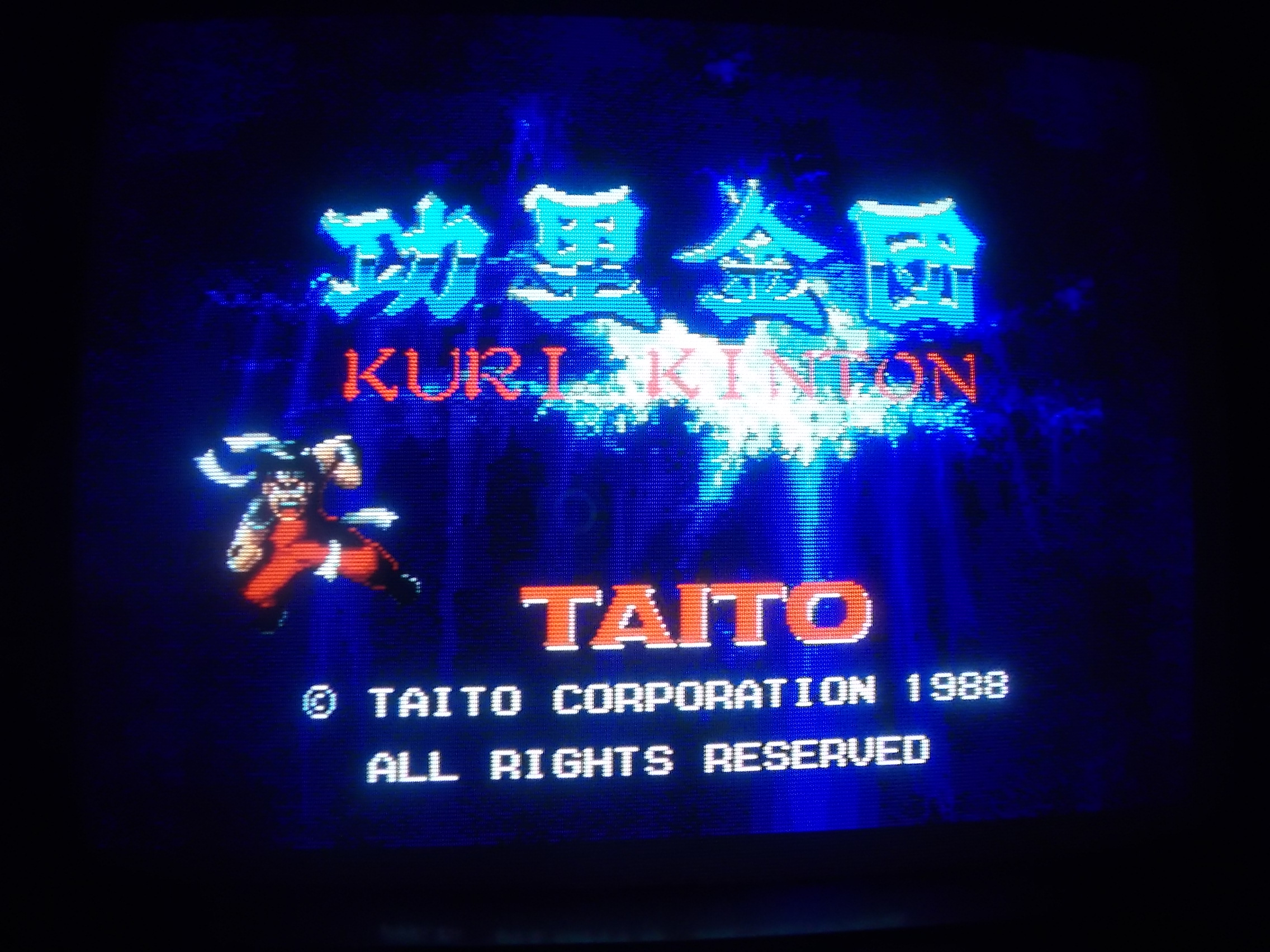Today we have some new PAL dumps.
‘coolmod’, one of our finest contributors, sent in different dumps, all are untested since they come from not working PCBs.We had from him dumps from these boards:
- Gals Panic 3.Devices were two PLDs in PLCC44 package : a ispLSI 1016 and a ispLSI 2032.
- Namco System 11.One PLD dumped from motherboard.
- Namco System 2.One PLD marked “SYS87B-2B” dumped from a CPU board of a Golly Ghost! boardset.This has slighly different equations than usual one marked “SYS87B-2” we had on database.
- Quick Pick 5 , a slots game by Konami.Two secured PALs here, I reversed them into GAL16V8 fusemap.Picture of board:
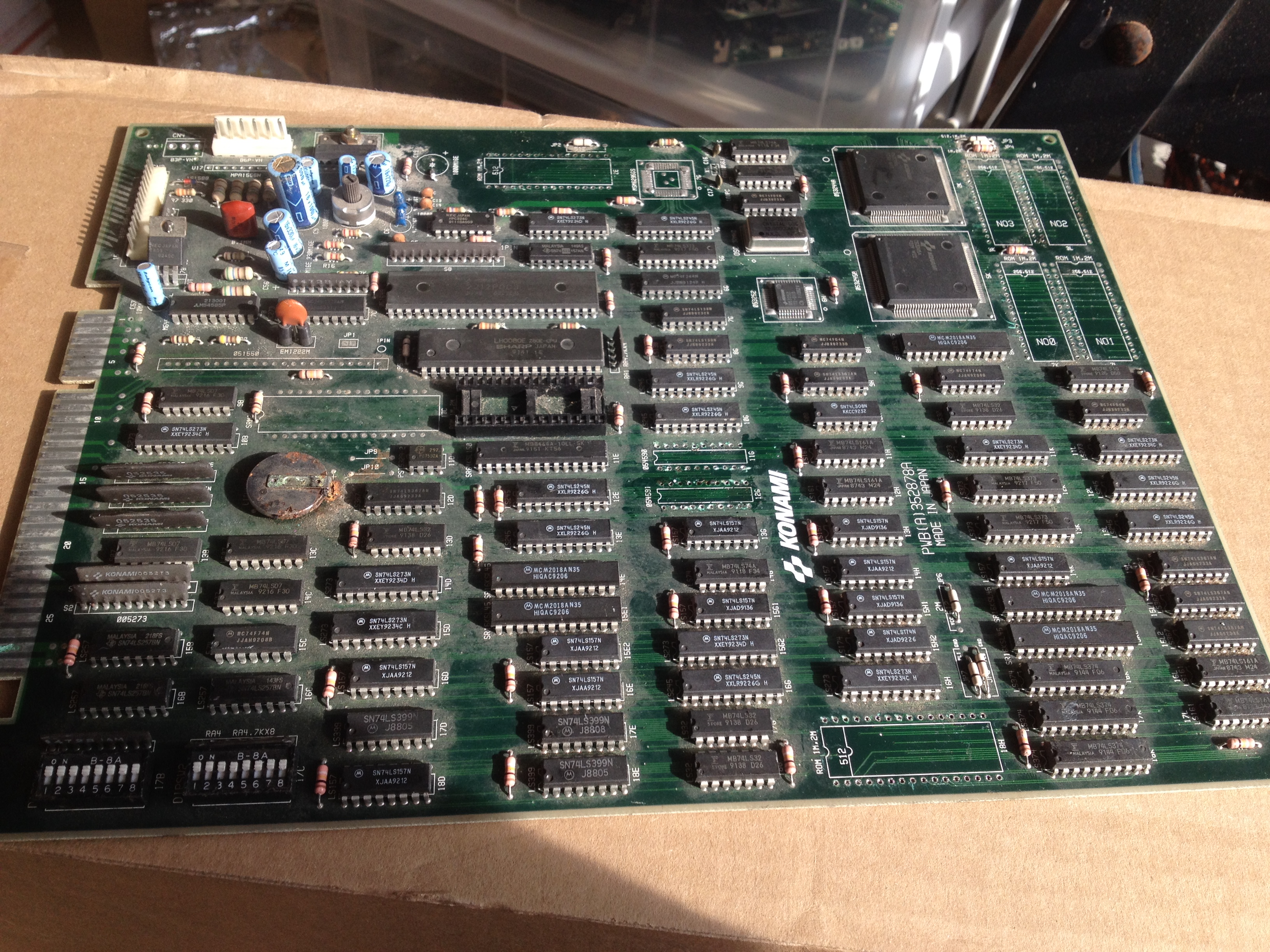
- VJ Dash1.2, a music game from Jaleco.Dumped one unsecured Xilinx XC7336 (PLCC44) PLD and one secured PEEL18CV8 (reversed by me into GAL16V8).Picture of board:

Artemio Urbina sent in dumps (from seven devices) from a Thunder Zone PCB, according to him these are specific to the Japanese ROM set so they may not work on other versions
‘chaneman’ sent in dump of a 82S153 device found on a Pengo bootleg board.He also send info on how to run on this board an unencrypted version of original Sega game code, you will find notes on database.
The user ‘undamned’ from Arcade-Projects forums dumped the PAL marked ‘D77-20’ from the Taito F3 cartridge ‘Kirameki Star Road’, device was an unsecured PALCE16V8 @IC37:
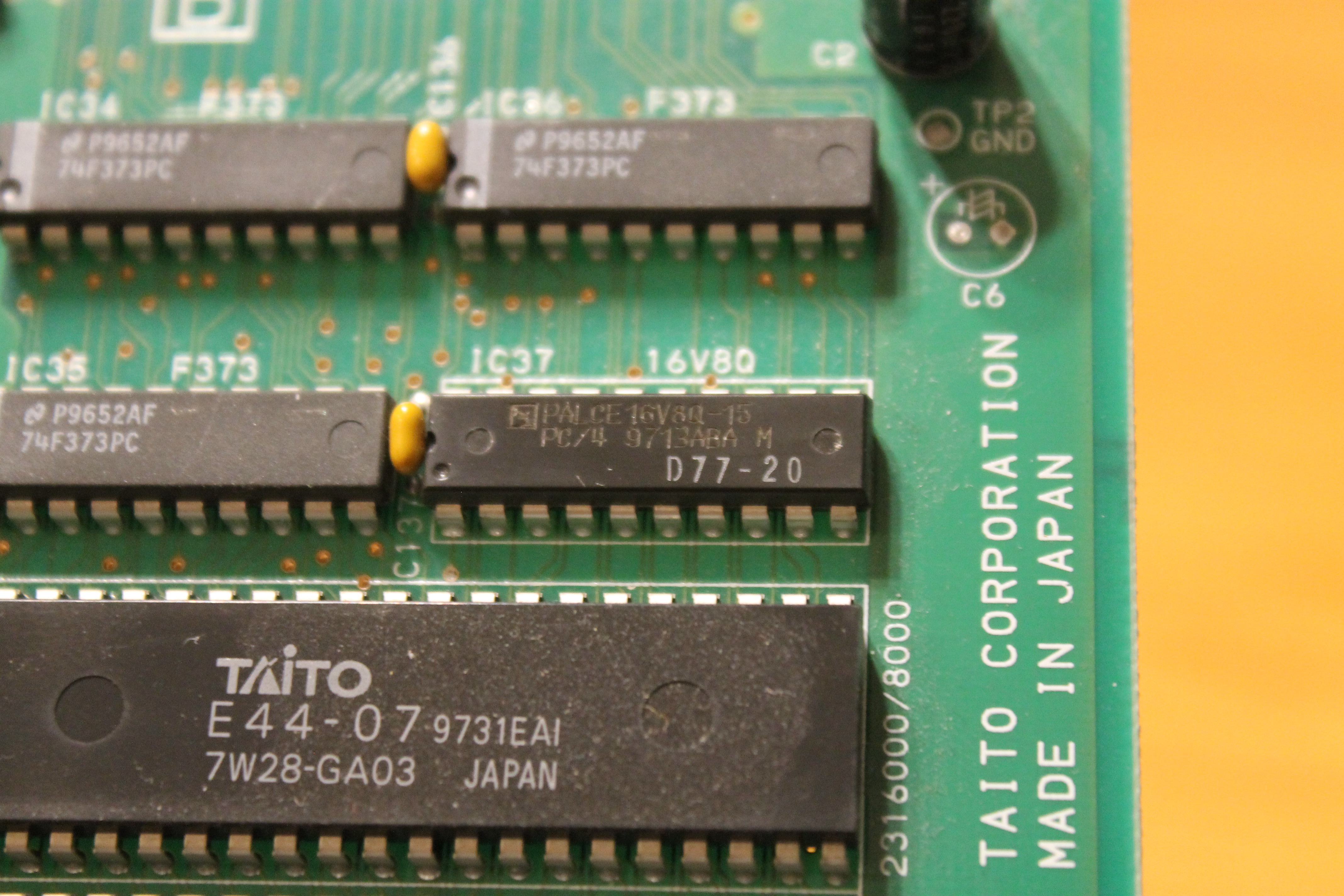
Lastly, I converted to GAL16V8 a BPROM found on a Black Tiger/Black Dragon PCB.Dump of the BPROM (a Fujitsu MB7114 marked ‘BD03’ @11K) was taken from MAME ROM set.GAL conversion was successfully tested by the Arcade-Projects user “rewrite” on his board which was missing this chip.
Thanks to all contributors.

